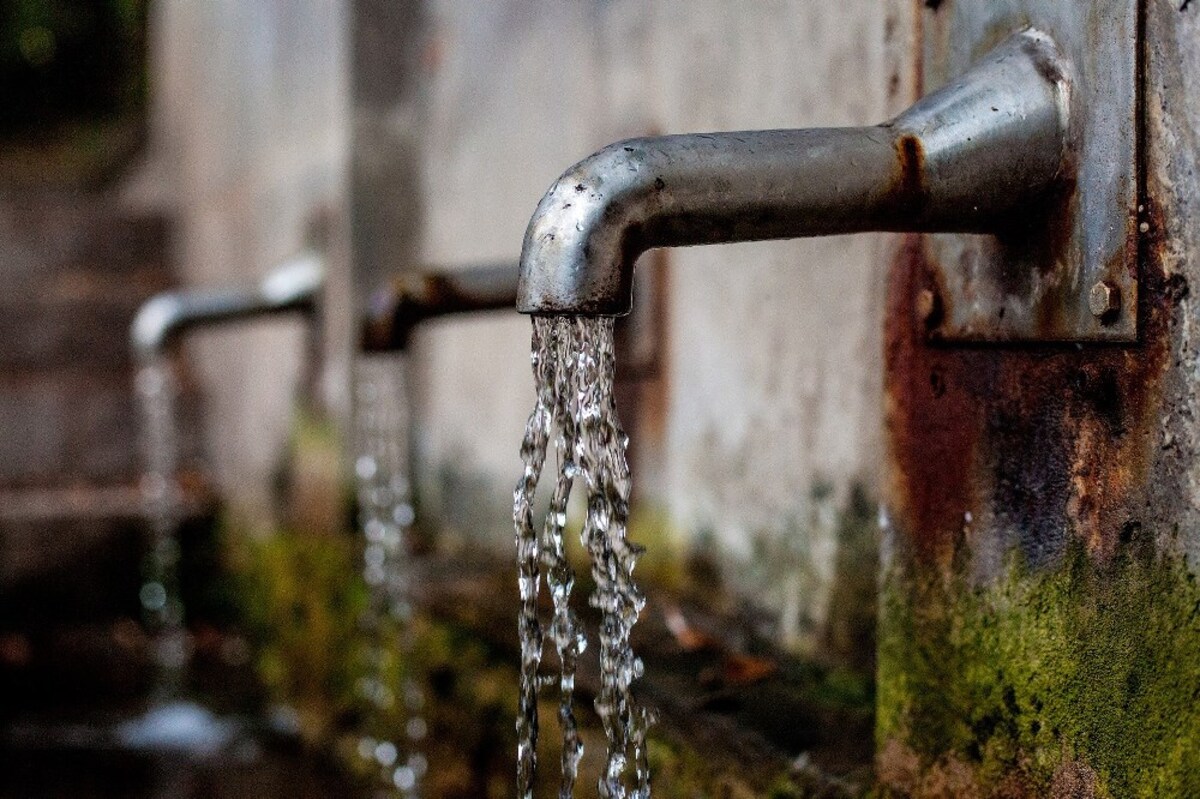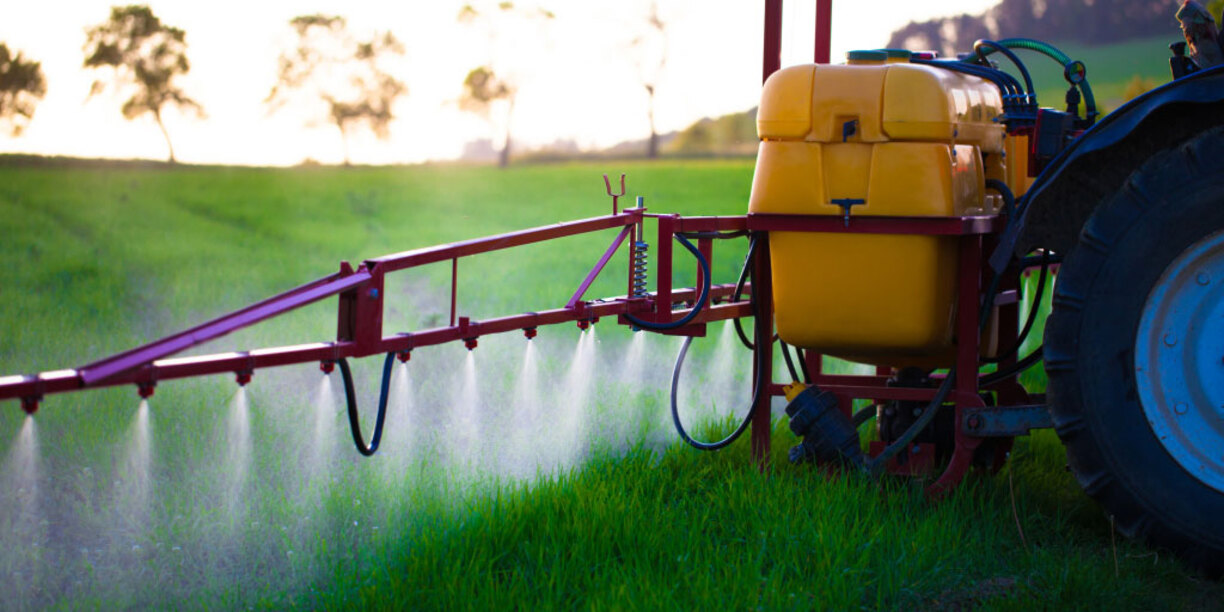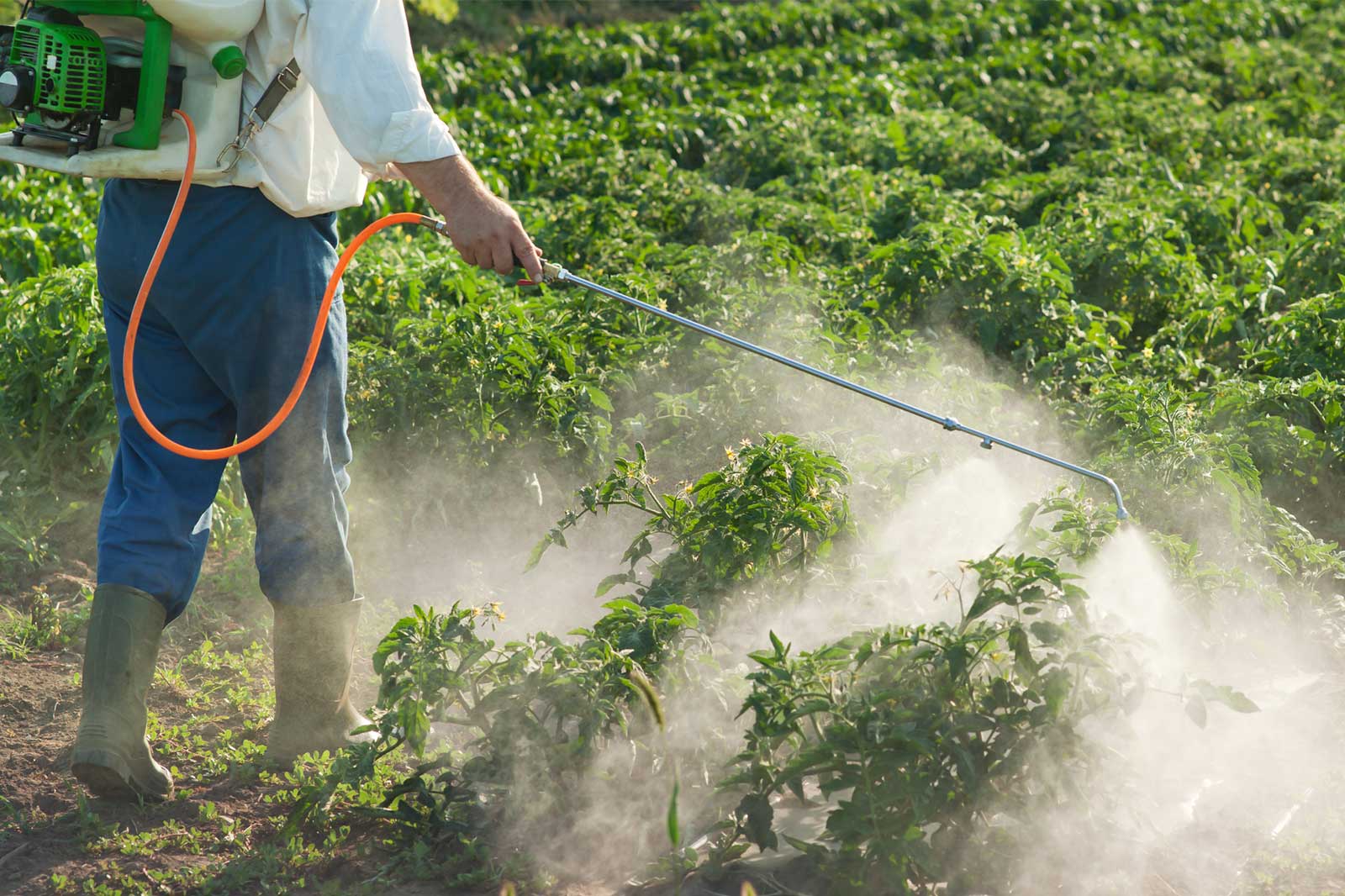Home>Gardening News and Trends>Latest News>How Long Do Pesticides Stay In The Air


Latest News
How Long Do Pesticides Stay In The Air
Published: November 24, 2023
Discover the latest news about how long pesticides stay in the air. Stay informed with the most recent updates on pesticide exposure and its impact on the environment.
(Many of the links in this article redirect to a specific reviewed product. Your purchase of these products through affiliate links helps to generate commission for Chicagolandgardening.com, at no extra cost. Learn more)
Table of Contents
- Introduction
- Factors Affecting Persistence of Pesticides in the Air
- Volatilization of Pesticides: Mechanisms and Influencing Factors
- Meteorological Conditions and their Impact on Pesticide Persistence in the Air
- Degradation Processes and Half-Life of Pesticides in the Atmosphere
- Health and Environmental Concerns of Pesticides in the Air
- Regulatory Measures and Monitoring of Airborne Pesticides
- Conclusion
Introduction
Pesticides are widely used in agriculture to control pests and enhance crop production. However, their use comes with potential risks to human health and the environment. While much attention has been given to the direct impact of pesticides on crops and water sources, the persistence and dispersion of these chemicals in the air is also a concern.
When pesticides are applied to fields, they can volatilize, or transform into a gas form, and be released into the atmosphere. Once in the air, these pesticide vapors can be carried over long distances, potentially exposing humans, animals, and ecosystems far away from the application site.
The length of time that pesticides stay in the air is influenced by several key factors. These include the chemical properties of the pesticide, meteorological conditions, and environmental factors. Understanding these factors is crucial for assessing the potential risks associated with airborne pesticide exposure.
In this article, we will explore the different factors that affect the persistence of pesticides in the air. We will discuss the mechanisms of pesticide volatilization, the influence of meteorological conditions, degradation processes, and the potential health and environmental concerns associated with airborne pesticides. Additionally, we will touch upon the regulatory measures and monitoring systems in place to ensure the safety and control of pesticide residues in the atmosphere.
By delving into these topics, we aim to provide a comprehensive understanding of how long pesticides can stay in the air, the implications of their presence, and the measures that can be taken to mitigate potential risks. This knowledge can help inform decision-making processes related to pesticide use and contribute to the development of sustainable agricultural practices.
Factors Affecting Persistence of Pesticides in the Air
The persistence of pesticides in the air is influenced by a variety of factors that impact their volatilization, dispersion, and degradation. Understanding these factors is crucial for assessing the potential risks associated with airborne pesticide exposure. Let’s take a closer look at some of the key factors that affect the persistence of pesticides in the air.
Chemical Properties: The chemical properties of pesticides play a significant role in their behavior in the atmosphere. Volatility, vapor pressure, molecular weight, and solubility are important characteristics that determine the extent to which a pesticide can volatilize into the air. Pesticides with high vapor pressures and low water solubility are more likely to evaporate and remain in the atmosphere for extended periods.
Formulation: Pesticides are often formulated with additives, called adjuvants, to improve their efficacy. These adjuvants can also influence the volatilization of the pesticide. For example, surfactants and emulsifiers can increase the surface area of the pesticide droplets, promoting faster volatilization. As a result, the formulation of the pesticide can impact its persistence in the air.
Temperature and Humidity: Meteorological conditions, such as temperature and humidity, can greatly affect the persistence of pesticides in the air. Higher temperatures can accelerate volatilization, while humidity levels can influence the sorption and condensation of pesticides on aerosols and atmospheric particles. Changes in these conditions can alter the atmospheric behavior of pesticides and their potential for long-range transport.
Soil Conditions: Pesticides can also persist in the air through re-volatilization from the soil surface. Certain soil properties, such as organic matter content and moisture levels, can favor or inhibit re-volatilization. The type of soil and its interaction with the pesticide can affect the amount and rate of re-volatilization, further contributing to the persistence of airborne pesticides.
Air Mass Movement: The movement of air masses plays a crucial role in the transport of pesticides over long distances. Prevailing winds, atmospheric circulation patterns, and turbulence can determine the dispersion and deposition of pesticide vapors. Air masses can carry pesticides from application sites to remote areas, potentially exposing regions far away from the original source.
Deposition Processes: Pesticides can undergo different deposition processes, such as dry deposition and wet deposition. Dry deposition occurs when pesticide particles settle onto surfaces through gravitational settling or impaction. Wet deposition refers to the removal of pesticides from the atmosphere through precipitation, such as rain or snow. These deposition processes can influence the persistence of airborne pesticides by removing them from the atmosphere or allowing them to settle onto various surfaces.
Overall, the persistence of pesticides in the air is influenced by a complex interplay of chemical properties, formulation, meteorological conditions, soil interactions, air mass movements, and deposition processes. Understanding these factors is crucial for assessing the potential risks associated with airborne pesticide exposure and developing effective mitigation strategies.
Volatilization of Pesticides: Mechanisms and Influencing Factors
Volatilization is the primary mechanism through which pesticides enter the air after application. The process involves the transformation of pesticides from liquid or solid forms into a gaseous state. Understanding the mechanisms and influencing factors of volatilization is crucial for assessing the potential risks associated with airborne pesticide exposure. Let’s explore this in more detail.
Evaporation: Evaporation is the most common mechanism of pesticide volatilization. It occurs when a pesticide, in liquid form, is applied to a surface and turns into a vapor due to its high vapor pressure. The rate of evaporation is influenced by factors such as the pesticide’s vapor pressure, temperature, and the surface area of the liquid droplets.
Diffusion: Diffusion is another mechanism that contributes to pesticide volatilization. It involves the movement of pesticide molecules from areas of higher concentration to areas of lower concentration within the air. The rate of diffusion is influenced by factors such as the concentration gradient, temperature, and the size of the pesticide molecules.
Air Movement: Air movement, driven by wind or turbulence, can significantly affect the volatilization of pesticides. Enhanced air movement increases the exchange of air between the pesticide-treated surface and the surrounding atmosphere, facilitating faster volatilization. As a result, pesticides are more likely to enter the air and potentially travel over long distances.
Surface Conditions: The condition of the surface to which pesticides are applied plays a role in volatilization. Pesticides on porous surfaces, such as soil, can easily penetrate into the subsurface and volatilize. In contrast, when pesticides are applied to non-porous surfaces, such as concrete or asphalt, volatilization is reduced due to limited permeability.
Temperature and Humidity: Temperature and humidity play a significant role in the volatilization process. Higher temperatures can increase the rate of evaporation, promoting faster volatilization of pesticides. Similarly, low humidity levels can enhance volatilization by reducing the ability of water vapor to condense on the pesticide molecules, allowing them to remain in the gas phase.
Chemical Properties: The chemical properties of pesticides, such as vapor pressure, solubility, and molecular weight, influence their volatilization tendencies. Pesticides with higher vapor pressures are more likely to volatilize quickly, as they have a greater tendency to transition from a liquid to a gas. Additionally, pesticides with lower water solubility tend to stay in the gas phase for longer periods.
Deposition and Sorption: Deposition and sorption processes can also affect the volatilization of pesticides. Deposition refers to the settling of pesticide particles onto surfaces, leading to their removal from the air. Sorption refers to the attachment of pesticides to surfaces, reducing their availability for volatilization. Both processes can impact the persistence of pesticides in the air.
Overall, the volatilization of pesticides is a complex process influenced by mechanisms such as evaporation and diffusion, as well as factors including air movement, surface conditions, temperature, humidity, chemical properties, and deposition/sorption processes. Enhancing our understanding of these mechanisms and factors is essential for assessing the environmental and health risks associated with airborne pesticide exposure.
Meteorological Conditions and their Impact on Pesticide Persistence in the Air
Meteorological conditions play a crucial role in determining the persistence of pesticides in the air. Factors such as temperature, wind speed, humidity, and precipitation can significantly influence the behavior and fate of airborne pesticides. Understanding the impact of these meteorological conditions is essential for assessing the potential risks associated with pesticide exposure. Let’s delve into this topic further.
Temperature: Temperature has a direct impact on the volatilization and degradation of pesticides in the air. Higher temperatures generally lead to increased evaporation rates, facilitating the release of pesticide vapors into the atmosphere. Warmer temperatures can also accelerate degradation processes, such as photodegradation, which can break down pesticides more rapidly in the presence of sunlight.
Wind Speed: Wind speed plays a critical role in the dispersion of pesticides in the air. Higher wind speeds can enhance the movement of pesticide vapors away from the source, increasing the potential for long-range transport. Additionally, strong winds can promote turbulence and vertical mixing, which can further disperse pesticides throughout the atmosphere.
Humidity: Humidity levels can influence the persistence of pesticides in the air through their impact on atmospheric processes. Low humidity conditions can favor the volatilization of pesticides by reducing the ability of water vapor to condense on pesticide molecules. Conversely, high humidity levels can facilitate the formation of aerosols and particles, promoting the sorption and deposition of pesticides, leading to their removal from the atmosphere.
Precipitation: Precipitation events, such as rain or snow, can have both positive and negative effects on the persistence of pesticides in the air. On one hand, precipitation can remove pesticides from the atmosphere through wet deposition, effectively reducing their concentration in the air. On the other hand, rain can also contribute to the re-suspension and redistribution of pesticide residues on surfaces, potentially prolonging their persistence in the atmosphere.
Atmospheric Stability: The stability of the atmosphere can affect the dispersion and persistence of pesticides. Stable atmospheric conditions, characterized by a lack of vertical mixing, can lead to the accumulation of pesticide vapors near the ground. This can result in higher exposure levels at the local scale. In contrast, unstable atmospheric conditions, characterized by turbulence and vertical mixing, can facilitate the dispersion of pesticides, reducing their concentration in a specific area.
Seasonal Variations: Seasonal variations in meteorological conditions can impact the persistence of pesticides in the air. For example, warmer temperatures and stronger wind speeds during the summer months can promote the volatilization and dispersal of pesticides. In contrast, cooler temperatures and reduced wind speeds during the winter months can result in decreased volatilization and longer persistence of pesticides in the air.
Understanding the role of meteorological conditions is crucial for assessing the potential risks associated with airborne pesticide exposure. By considering factors such as temperature, wind speed, humidity, precipitation, atmospheric stability, and seasonal variations, we can gain insights into the behavior and fate of pesticides in the air, contributing to the development of effective mitigation strategies and regulations.
Degradation Processes and Half-Life of Pesticides in the Atmosphere
The degradation of pesticides in the atmosphere is a complex process influenced by various factors. Chemical reactions, photodegradation, and other environmental processes contribute to pesticide breakdown and determine their half-life in the air. Understanding these degradation processes is crucial for assessing the potential risks associated with airborne pesticide exposure. Let’s explore this further.
Chemical Reactions: Chemical reactions, such as oxidation and hydrolysis, can lead to the degradation of pesticides in the atmosphere. Oxidation occurs when pesticides react with oxygen or other reactive species present in the air. Hydrolysis, on the other hand, involves the breakdown of pesticides through interactions with water molecules. These chemical reactions can alter the structure and properties of pesticides, rendering them less persistent in the air.
Photodegradation: Photodegradation is a significant degradation process for many pesticides in the atmosphere. When exposed to sunlight, pesticides can undergo photolytic reactions, breaking down their chemical bonds. Ultraviolet (UV) radiation is particularly effective at inducing photodegradation. The intensity of UV radiation, duration of exposure, and the chemical composition of the pesticide are all factors that influence the rate of photodegradation.
Atmospheric Reactions: Pesticides can undergo reactions with reactive atmospheric species, such as ozone, hydroxyl radicals (OH), and nitrate radicals, which are naturally present in the air. These reactions, known as atmospheric reactions, can lead to the transformation and degradation of pesticides. The rate of atmospheric reactions depends on the pesticide’s chemical properties and the concentration of reactive species in the atmosphere.
Half-Life: The half-life of a pesticide refers to the time taken for half of the initial concentration of the pesticide to degrade in a specific environment. In the atmosphere, the half-life of pesticides can vary widely, ranging from a few hours to several months or even years, depending on the specific pesticide and environmental conditions. Pesticides with higher vapor pressures and greater susceptibility to photodegradation typically have shorter half-lives in the air.
Environmental Conditions: Environmental conditions, such as temperature, humidity, and atmospheric composition, can influence the degradation processes and half-life of pesticides in the atmosphere. Warmer temperatures generally accelerate degradation processes, while high humidity levels can affect the availability of reactive species and influence the rate of chemical reactions. Additionally, variations in atmospheric composition, such as the presence of pollutants and other gases, can interact with pesticides and impact their degradation rates.
Persistence: Despite degradation processes, some pesticides can still exhibit persistence in the atmosphere. Persistent pesticides have longer half-lives and can remain in the air for extended periods. Their persistence increases the potential for long-range transport and exposure to regions far from the initial application site. Understanding the persistence of airborne pesticides is crucial for assessing their environmental impact and potential risks to human health.
By studying the degradation processes and half-life of pesticides in the atmosphere, we can gain valuable insights into their fate and behavior. This knowledge allows for better risk assessment, development of regulations, and implementation of strategies to mitigate the potential adverse effects associated with airborne pesticide exposure.
Health and Environmental Concerns of Pesticides in the Air
The presence of pesticides in the air raises significant concerns for both human health and the environment. Potential exposure to airborne pesticides can have detrimental effects on human populations, wildlife, and ecosystems. Understanding these health and environmental concerns is essential for developing effective strategies to mitigate the risks associated with airborne pesticide exposure. Let’s explore this in more detail.
Human Health: Inhalation is one of the primary routes of exposure to airborne pesticides for humans. Pesticide vapors can be inhaled and enter the respiratory system, potentially leading to a range of health issues. Acute effects of airborne pesticide exposure can include respiratory irritation, headaches, dizziness, nausea, and even more severe symptoms in high concentration situations. Long-term exposure to low levels of pesticides in the air has been associated with chronic respiratory conditions, neurological disorders, hormonal disruptions, and increased risk of certain cancers.
Wildlife and Ecosystems: Airborne pesticides can also have detrimental effects on wildlife and ecosystems. Birds, insects, and other non-target organisms may be exposed to pesticide residues in the air, leading to a range of ecological impacts. Pesticides can disrupt the reproductive systems of wildlife, impair their ability to forage, migrate, or reproduce, and contribute to declines in populations. Additionally, the loss of non-target insects can impact pollination services, which are vital for maintaining healthy ecosystems and supporting food production.
Environmental Persistence and Long-range Transport: Airborne pesticides can undergo long-range transport, potentially reaching remote areas far from the original application site. This transport can contribute to the global distribution of pesticides, leading to environmental contamination in previously unaffected regions. Additionally, persistent pesticides in the air can accumulate in soil, water bodies, and vegetation, posing long-term risks to ecosystems and impacting the overall biodiversity and ecological balance.
Environmental Contamination: Airborne pesticides can deposit onto various surfaces, including soil, water bodies, plants, and buildings, leading to environmental contamination. Runoff and leaching of pesticide residues can contaminate surface water and groundwater, affecting aquatic organisms and compromising drinking water quality. Moreover, deposition of pesticides on land can have adverse effects on soil health, disrupting beneficial microorganisms and impacting agricultural productivity.
Non-target Effects: Airborne pesticides can also have unintended effects on non-target organisms, including beneficial insects, such as pollinators and natural predators, which are essential for ecosystem balance. Pollinators, like bees and butterflies, may be exposed to pesticide residues in the air during foraging, resulting in reduced pollination rates and decreased crop yields. The loss of natural predators due to pesticide exposure can lead to increased pest populations and the need for further pesticide use, creating a detrimental cycle.
Given these health and environmental concerns, it is crucial to adopt measures to minimize the release of pesticides into the air, promote alternative pest control methods, and implement regulatory frameworks to ensure the safe use and management of pesticides. This includes the development and implementation of integrated pest management strategies, increased research and monitoring of airborne pesticide residues, and public education and awareness about the potential risks.
Regulatory Measures and Monitoring of Airborne Pesticides
To address the potential risks associated with airborne pesticides, regulatory measures and monitoring systems have been established to ensure the safe use, management, and control of these chemicals. These measures aim to protect human health, the environment, and non-target species from the adverse effects of airborne pesticide exposure. Let’s explore the regulatory and monitoring aspects in more detail.
Regulatory Frameworks: Many countries have implemented regulatory frameworks to govern the use and application of pesticides. These frameworks include the registration and approval processes for pesticides, setting maximum residue limits in the air, and defining appropriate use guidelines. Regulatory agencies assess the potential risks and benefits of pesticides and establish guidelines to ensure their safe use, including restrictions on application near sensitive areas, such as schools and residential areas.
Integrated Pest Management (IPM): Integrated Pest Management is an approach that seeks to minimize pesticide use by combining various pest control methods. IPM strategies involve the use of a combination of cultural, biological, and chemical control measures to manage pests effectively while reducing the reliance on pesticides. By adopting IPM practices, the amount of pesticides released into the air can be minimized, thereby reducing the potential risks associated with airborne pesticide exposure.
Monitoring and Surveillance: Monitoring systems play a crucial role in assessing the levels of pesticides in the air and evaluating their potential risks. Environmental agencies and research institutions implement monitoring programs to measure pesticide residues in the air, analyze trends, and identify hotspots of contamination. This data provides valuable information for risk assessments, regulatory decision-making, and the development of strategies to mitigate the impacts of airborne pesticides.
Air Quality Standards: Some countries have specific air quality standards that include guidelines for pesticide residues. These standards define acceptable levels of pesticides in the air, helping to ensure that exposure remains within safe limits. Monitoring air quality against these standards allows for early detection of potential issues and facilitates targeted actions to reduce pesticide levels if necessary.
Research and Development: Ongoing research and development efforts are essential for enhancing our understanding of the behavior, fate, and impacts of airborne pesticides. Research institutions and academia study the health effects, environmental impact, and efficacy of pesticide control strategies. This knowledge helps inform regulatory decisions, improve monitoring techniques, and support the development of safer and more sustainable pest management practices.
Education and Awareness: Public education and awareness campaigns play a vital role in promoting responsible pesticide use and reducing the risks associated with airborne pesticides. Educating farmers, applicators, and the general public about the potential health and environmental effects of pesticides helps encourage proper handling, storage, and application practices. It also promotes the adoption of alternative pest control methods, such as IPM, and encourages the use of personal protective equipment when handling pesticides.
By implementing regulatory measures, establishing monitoring systems, conducting research, and fostering education and awareness, we can work towards minimizing the risks associated with airborne pesticides. These collective efforts ensure the protection of human health, non-target species, and the environment, while supporting sustainable agriculture and pest management practices.
Conclusion
Airborne pesticides pose significant risks to human health, wildlife, and ecosystems. The persistence and dispersion of these chemicals in the air can result in exposure far from their application sites, making it crucial to understand the factors that influence their behavior and persistence in the atmosphere.
Factors such as chemical properties, meteorological conditions, degradation processes, and environmental factors all play a role in determining the persistence of pesticides in the air. Understanding these factors is key to assessing the potential risks associated with airborne pesticide exposure and developing effective mitigation strategies.
Volatilization is the primary mechanism through which pesticides enter the air, and factors like evaporation, diffusion, air movement, surface conditions, temperature, humidity, and formulation can impact the extent of volatilization.
Meteorological conditions, including temperature, wind speed, humidity, precipitation, atmospheric stability, and seasonal variations, also influence the persistence of pesticides in the air. These conditions affect the dispersion, deposition, and re-volatilization of pesticides, ultimately determining their concentration and potential reach.
The degradation processes, such as chemical reactions, photodegradation, and atmospheric reactions, contribute to the breakdown of pesticides in the air. Understanding these processes aids in predicting their half-life and assessing their persistence in the atmosphere.
Concerns regarding air pollution from pesticides extend to human health, wildlife, and the environment. Inhalation of airborne pesticides can lead to acute and chronic health effects in humans, while non-target organisms and ecosystems may experience adverse ecological impacts. Persisting and migrating pesticides can also contribute to environmental contamination and disrupt ecological balance.
To address these concerns, regulatory measures, monitoring systems, and integrated pest management approaches have been established. Regulatory frameworks govern the use and application of pesticides, while monitoring systems provide data on pesticide residues in the air and guide risk assessments. Integrated pest management promotes alternative methods to reduce pesticide reliance and minimize their release into the air.
Education and awareness are essential in ensuring responsible pesticide use and fostering sustainable pest management practices. Ongoing research and development efforts continue to enhance our understanding of airborne pesticides and support the development of safer agricultural practices.
By combining these approaches, we can minimize the risks associated with airborne pesticide exposure, protect human health, safeguard biodiversity, and create a sustainable future for agriculture and the environment.










